

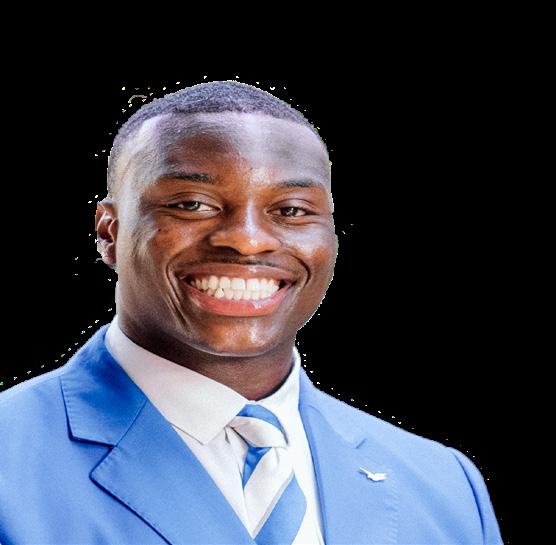








There are unanswered questions about DKE and Pi Kappa Phi’s return to campus. The
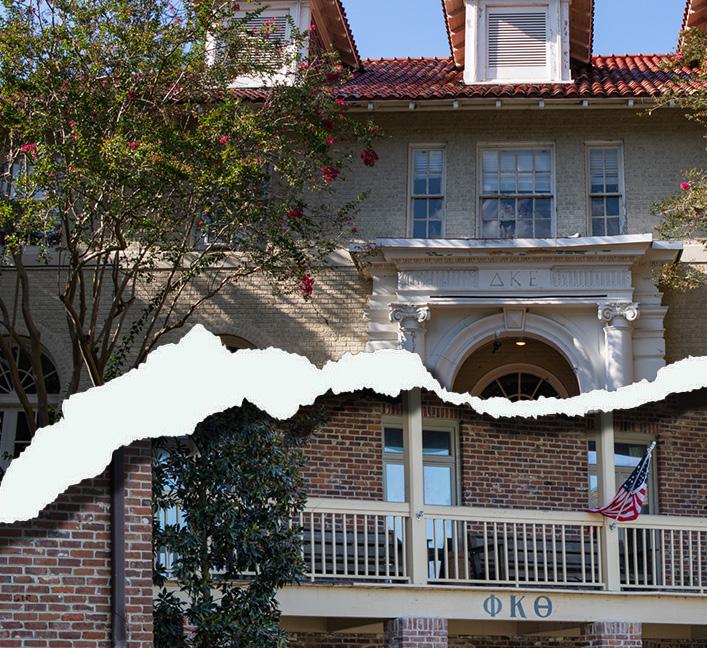




BY KALEY MELANCON, JASON WILLIS, & COURTNEY BELL Staff Writer, Editor in Chief, & News Editor
Two fraternities are returning to LSU’s campus this fall semester after being banned due to hazing incidents. One of them is back four years earlier than its suspension initially stipulated.
In 2019, LSU found Pi Kappa Phi and Delta Kappa Epsilon responsible for violating the LSU Code of Student Conduct, which led to their suspension. Violations included hazing, coercive behavior and failure to comply with university rules.
DKE was to be suspended until May 2029, but LSU permitted an early return this year. The fraternity was well-known, many in Greek circles said at the time of its suspension, for skirting the line with intense hazing and controversial gameday banners.
Over the past few months, DKE International said it has worked closely with LSU’s Greek Life staff and the dean of students to ensure its return is built on a strong foundation.
Pi Kappa Phi was suspended until May 2023. After completing its suspension, the chapter applied for return through the Interfraternity Council’s expansion process. Pi Kappa Phi’s Chief Marketing Officer Maureen Walker said the chapter is working to ensure students uphold its values in everything they do.
Through a series of interviews and public records requests, the Reveille has determined how the fraternities were reinstated and what restrictions will be placed on them going forward. However, some questions still remain.
One question is why at least two students appear to have acted as DKE representatives before the fraternity was approved to begin recruiting members. Other questions stem from why LSU’s records on the fraternities’ reintegration don’t entirely match what the university said it would require when the suspensions were put in place.
According to LSU Greek Life, both Pi Kappa Phi and DKE began the reinstatement process by submitting letters of interest in December 2023 and this May, respectively. They then submitted full re-establishment applications.
Greek Life Director Beth Newell said the department considered DKE’s request for an early return because “a significant suspension has been served.” She also noted that all of the members involved with the hazing that caused the chapter to be banned are no longer at LSU.
Greek Life and the Office of the Dean of Students told the Reveille they reviewed but did not approve both fraternities’ applications. The final decision to approve the chap -
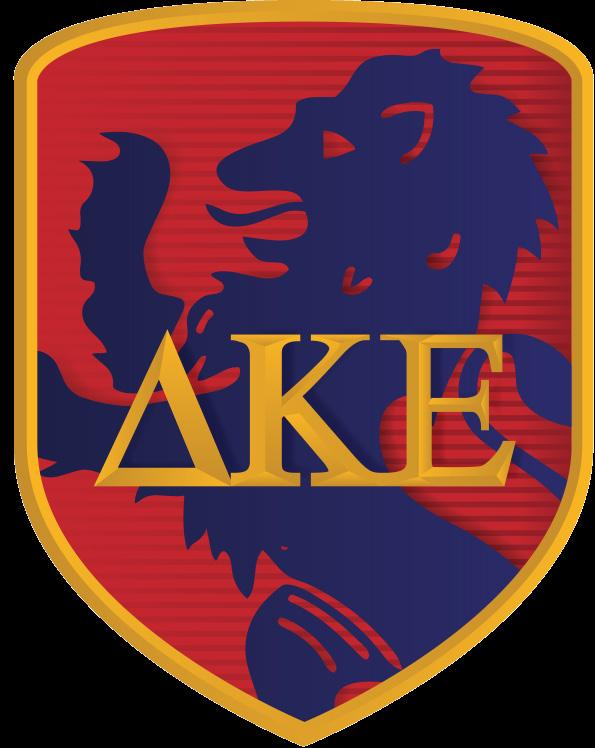
ters’ return was not administration’s but instead was made by the Interfraternity Council, a governing body of students from the university’s fraternities. Newell and Dean of Students Fran’Cee BrownMcClure said this is the standard procedure for new or returning fraternities.
IFC President Brennan Belanger, a member of Sigma Nu, confirmed the IFC voted to let both fraternities return in special votes with all 14 chartered campus chapters represented. Standard IFC votes include only its nine executive board members.
The IFC vote on Pi Kappa Phi took place last fall, Belanger said, while the vote to reinstate DKE was this summer. For the reinstatement to pass, at least 10 of the 14 needed to vote to approve, Belanger said, though he wouldn’t disclose specific voting numbers.
Belanger said IFC’s process included hearing presentations from national representatives and alumni from both DKE and Pi Kappa Phi before making its decision.
Walker said Pi Kappa Phi regrets that its members at the time of the chapter’s closure did not abide by the standards of the fraternity or LSU. She said the new Pi Kappa Phi is made up of entirely new members who will be guided by Pi Kappa Phi staff to reflect the group and LSU’s values.
“We view the closure as an important reset,” Walker said in a message to the Reveille.
Walker said two leadership consultants for Pi Kappa Phi will recruit members and help establish a healthy chapter culture. The group is looking for men who want to contribute positively to LSU and the Baton Rouge community, Walker said.
Belanger estimated Pi Kappa Phi had so far recruited 70 to 80 students and elected its executive board and would soon move onto new member education.
As for DKE, Director of Member Services Trey Robb said the organization is excited to be part of the LSU community again as it begins informal recruitment. Robb said the chapter has had a great relationship with LSU and has been partnering with them upon return.
“We’re just excited to be a part of the LSU community again, con-
tribute positively to campus and join a prestigious Greek Life community on LSU’s campus,” Robb said.
In the 2019 letters sent from Student Advocacy & Accountability to the two fraternities informing them of their suspension, each was given a list of conditions that they’d have to meet if they were to be reinstated.
One condition was that each frat would formally meet with the dean of students and agree on a two-year reintegration plan before reinstatement. When asked, Brown-McClure, who became dean of students last year, didn’t confirm if or when these meetings occurred but said she and Newell have been having “regular meetings with both organizations.”
Though it’s unclear if meetings to create and approve a two-year plan took place, the Reveille obtained DKE’s plan through a public records request. It lists stipulations that the fraternity agreed to meet, some of which were self-imposed.
According to the plan, DKE has agreed not to allow alcohol on its house premises for the next two school years or have animals in any ceremonies. It also will install cameras in its common areas, conduct a drug test program, remove hazing references from its chapter room and do away with its secret Friars society, among other things.
In the two-year plan, LSU initially said DKE would not be allowed to have any students living in its on-campus house this academic year. DKE requested that upperclassmen be allowed to reside in the house in the spring for “organizational financial reasons.” Brown-McClure said this request was granted.
Greek Life told the Reveille
that Pi Kappa Phi’s two-year plan, which it agreed on with the dean of students, “cannot be located.”
The fraternity did provide a year-and-a-halflong expansion timeline in its application for reinstatement, which included details about recruiting, philanthropy efforts and member education.
Greek Life will also receive weekly updates from a full-time staff member from Pi Kappa Phi’s national organization who’s required to live with and super-

vise the fraternity.
In the initial suspension letter sent to Pi Kappa Phi, the restrictions — which were less extensive than those placed on DKE — also included having an alumni chapter advisory team approved by LSU.
Like Pi Kappa Phi, DKE is also required to have a full-time staff member from its national organization reside in the fraternity’s house and deliver a weekly update to the dean of students. Both fraternities also submitted risk management policies, including hazing and alcohol policies, as part of their application for reinstatement.
Unauthorized representatives
Though they were not permitted to participate in this year’s rush process, both fraternities are now engaging in informal recruitment, which often consists of tabling and reaching out to students who didn’t receive bids during rush.
DKE’s appointed staff member arrived on campus on Oct. 10, Greek Life told the Reveille. According to university restrictions placed on the chapter, recruitment, initiation and new member education can only be conducted by DKE professional staff. Brown-McClure
see FRATERNITY, page 5
• The frats’ returns, including DKE’s four-year-early reinstatement, were not approved by administration but by the student-led Interfraternity Council, the standard procedure at LSU.
• At least two students acted as representatives of DKE, operating an Instagram, hosting an event and forming an interest group, before the fraternity was meant to have any active members. DKE’s national organization said it didn’t authorize the students to do so, but one student said he’d been in contact with national representatives.
• LSU said it couldn’t locate one of the two frats’ two-year reintegration plans they were required to make.
• LSU wouldn’t say if or when fraternity representatives formally met with the Dean of Students to agree on the two-year plans, as required by the original sanctions.
NEWSROOM (225) 578-4811
Editor-in-Chief JASON WILLIS
Editor
TOMLINSON
ADVERTISING (225) 578-6090
Layout/Ad Design
ASHLEY KENNEDY
Layout/Ad Design REESE PELLEGRIN
Layout/Ad Design ALAYNA YOUNG
The Reveille holds accuracy and objectivity at the highest priority and wants to reassure its readers the reporting and content of the paper meets these standards. This space is reserved to recognize and correct any mistakes that may have been printed in The Daily Reveille. If you would like something corrected or clarified, please contact the editor at (225) 578-4811 or email editor@lsu.edu.
The Reveille is written, edited and produced solely by students of Louisiana State University. The Reveille is an independent entity of the Office of Student Media within the Manship School of Mass Communication. A single issue of The Reveille is free from multiple sites on campus and about 25 sites off campus. To obtain additional copies, please visit the Office of Student Media in B-39 Hodges Hall or email studentmedia@ lsu.edu. The Reveille is published biweekly during the fall, spring and summer semesters, except during holidays and final exams. The Reveille is funded through LSU students’ payments of the Student Media fee.
BY ALAYNA FORD Staff Writer
Students celebrated LSU’s 100th Homecoming with a schedule full of festivities put on by Campus Life, Student Government, the Residence Hall Association, LSU Residential Life, the Panhellenic Council and the Interfraternity Council.
The jam-packed itinerary included block parties, a paint-throwing party, a fashion show, a concert and more.
Campus Life’s block party Monday kicked off the week. From 11 a.m. to 1 p.m. on Tower Drive, students enjoyed free food, live music and interactive games. The rainy weather didn’t stop the party as students were excited to celebrate this year’s theme, “Golden Days and Purple Nights.”
“I just love LSU and its way of showing school spirit,” said freshman biochemistry major Courtney Tate.
Monday evening, students from the LSU RHA held its annual paint party on the Parade Ground, called Splatterbeat. Students painted T-shirts with friends and threw smoky paint bombs at their friends. Construction management senior Donovan Davis thought the event was a colorful way to celebrate Homecoming.
“I thought the Splatterbeat was fun,” Davis said. “I’ve done a color wars type of event before but this was 10 times more fun to me. The only downside was the forever-long shower afterwards.”
Campus Life hosted the homecoming concert Thursday night. It was only available to LSU students who have at least a 2.0 overall GPA, had completed their registration and are full-time students in good standing with the university. LSU required students to purchase a ticket before the show, with prices starting at $20.
Performances included artists JT, Kiana Ledé, YKNIECE, ZEDDY WILL and DJ TMONEY. Doors opened at 6:30 p.m. and students danced the night away until close to midnight.
The week ended with the National Panhellenic Council Step Show where NPHC organizations showed off their moves for a grand prize of $1,000. At the end of the night, the Iota Theta chapter of Delta Sigma Theta Sorority Inc. won for the sororities and the Theta Kappa chapter of Omega Psi Phi won for the fraternities.
The events also gave away LSU merchandise like t-shirts and cups. Food trucks and vendors were placed at events for students.
The main event at the end of the week was the LSU versus South Carolina football game, which LSU won 20-10. During halftime, T’Senre Gray and Kalayna Walker were crowned king and queen to celebrate the end of the university’s 100th Homecoming.
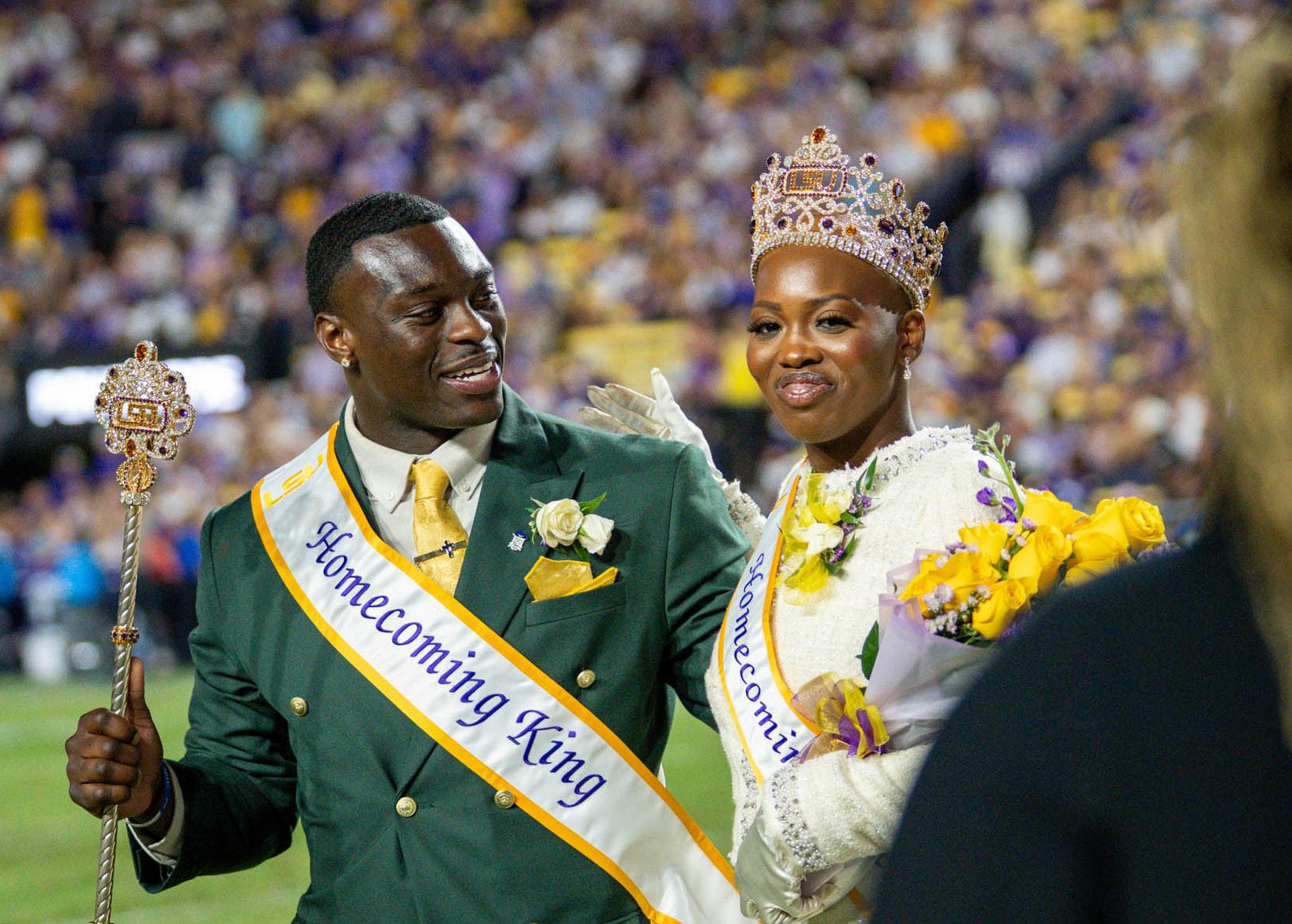
BY JORJA ETHRIDGE & MAIA TYLER Staff Writers
When LSU and South Carolina made their way to reset during halftime, the Homecoming Court took the field and T’Senre Gray and Kalayna Walker were announced as this year’s Homecoming King and Queen.
Gray is a construction management senior, the president of Phi Beta Sigma Fraternity and the founder of LSU’s On Geaux Run Club. He also serves as a sergeant in the Louisiana Army National Guard. He’s from Lansing, Michigan.
Gray said he ran for Homecoming King to do something bigger than himself.
“I always want to amplify the community around me because that’s
the community that provided for me, as in going to the Boys & Girls Club, having a single-parent mother and being the oldest of four kids, having to take care of my siblings because my father wasn’t around,” Gray said. “So, just being able to impact the little boys that was just like me, who were a part of this community.”
When his name was announced during Saturday’s game, Gray couldn’t help but start dancing. The positive energy surrounded him on the Court, as well as the lively spirit throughout the stadium. In that moment, all he could do was dance.
“I started dancing,” he said. “It was so crazy, there was just so much energy. Just full positivity, smiles, it was joyful for me seeing the crowd and the atmosphere of the stadium being joyful. I took a second to
just detach myself and do my little dance.”
During his reign as Homecoming King, he hopes to bring more advocacy to the student body. He wants to expand his impact on students and be a friend to anyone who might need it.
“Just show everyone that they can enjoy and love LSU,” Gray said. “If they are looking for a friend, I am that friend, or I can help find you clubs or organizations that are that for you. We have so much to offer at LSU. LSU is more than just a school. It’s family.”
After his graduation, Gray plans to work for KG Industries, a leader in providing protective metal coatings and industrial lubricants, where he is currently interning. He is excited to continue his line of work, hoping to
climb the ladder and start working in the same communities that have shaped him.
Gray implores students who want to get involved in campus life to just do it. He wants to be able to help people find their sub-communities within the greater LSU community.
“My advice for anyone who would like to get involved in campus life, I would say, just go up to whatever you see,” Gray said. “You see flyers, you see people just strolling in a circle, as I did within my fraternity. Just go out and research them, text them, DM them. They are people too. You can go out and join those organizations; everybody is very accepting. We’re very diverse, and that’s what makes [LSU] even better.”
Walker said that hearing her name called was an answer to her prayers.
“I felt honored to represent my dream school,” Walker said.
Walker decided to apply for Homecoming Court to give back to the LSU community that taught her to lead with confidence and compassion. Living with alopecia, Walker has learned that beauty, purpose and leadership do not come from appearance. Instead, she said those traits come from authenticity.
Walker believes that if she puts her mind to something, she can achieve it through faith. She emphasized that her faith in Jesus is what got her through this process.
During her reign as Homecoming Queen, Walker plans to use her platform to uplift others, especially those who feel overlooked or unseen. She wants to bridge the gap between LSU and the Christian community.
Walker said being an LSU student has shaped her perspective on life.
“Life is so much bigger than just you.” Walker said. “Wherever you go, you represent a whole community.”
As an LSU student, Walker has taken advantage of opportunities
see ROYALTY, page 5
BY CHLOE RICHMOND Sports Editor
Following a tough loss, LSU took the bye week to rest, recover and prepare ahead of South Carolina.
The defense needed to rest after being on the field for over 50 plays against Ole Miss.
The offense needed to recover after giving the Rebels the game 24-19, letting an attainable ranked road win slip out of its hands.
The team as a whole needed to prepare for a hungry South Carolina team, also fresh off a bye, but unlike LSU, got to sit with a 35-13 home win against Kentucky.
LSU’s focus was all about playing complementary football — and that it did. Although unpretty, LSU’s offense outlasted South Carolina’s while the defense held off momentum-swinging plays, leading to the 20-10 Tiger win.
“What I loved was our com-
pete,” LSU head coach Brian Kelly said. “I loved the way our guys competed for four quarters, our fans stayed in there with us.”
When LSU and South Carolina met in Week 3 at Williams-Brice Stadium last year, the two programs were still easing into the transition of new quarterbacks, given that it was so early in the season.
Garrett Nussmeier spent three years on the bench and trained behind Heisman winner Jayden Daniels. LaNorris Sellers was coming off a redshirt season, eager to take the offensive reins after the New Orleans Saints drafted former starter Spencer Rattler in the 2024 NFL Draft.
But this time, it’s Week 7 and both quarterbacks have starting experience rather than just weeks of practice under their belt.
Nussmeier outplayed Sellers

ALUMNI
BY JORJA ETHRIDGE Staff Writer
LSU Veterinary Medicine graduate Dr. Jackie Simon opened Country Place Veterinary Clinic over 30 years ago, and it remains the only animal clinic in St. Martinville, Louisiana.
Simon was involved in 4-H and showing beef cattle when she was young. She recalled her first heifer not being able to give birth on its own, so she called the nearest veterinarian who took almost an hour to get there. By the time the vet arrived and delivered the calf, it was already dead. This loss inspired Simon to become a veterinarian and return home to help her community.
Simon said the closest veterinarian practice to hers is about 25 minutes away. Being the only veterinarian around comes with its challenges, but she said the struggles have lessened over the years as she acquired new technology and employees. For example, she said that when the clinic first opened, she had an issue with getting blood work back fast enough. Now she has a blood machine and can do more work in-house.
Prior to an emergency clinic opening in Lafayette in 2005, Simon said she had to take emergency calls at all hours of the night and still be able to function the next day. While this emergency clinic helps, Simon still strives to educate the people in her area on preventative healthcare for their animals. She said she teaches people how to handle emergencies and shares some easy fixes they can do on their own.
In addition to advanced technology, Simon has gained some fellow veterinarians. Her daughter, Dr. Megan Simon, also graduated from the LSU School of Veterinary Medicine. She joined her mother at Country Place in 2019.
“I think it’s totally fantastic and I’m very proud of her.” Jackie Simon said, “A lot of people say they can’t work with family, but we have a very good working relationship.”
Another LSU Vet Med graduate, Dr. Tori Oliver, joined the Simons this year. Each veterinarian brought her own passion into the practice, and together they care for pets, livestock, birds, reptiles and exotic animals. Jackie Simon, Megan Simon and Oliver are accompanied by 11 veterinary technicians and staff members.
BY EMILY BRACHER Staff Writer
Louisiana is home to over 8,000 species of bugs. Some are helpful, some are pretty to look at and some deposit bacteria that can cause a serious blood infection with a kiss.
Kissing bugs are in at least 30 states, with two species living in Louisiana: the Eastern Conenose bug and the Triatoma sanguisuga bug. The black bug with orange markings carries Chagas disease, which can have mild symptoms like swelling or fever, or long-lasting symptoms like congestive heart failure if left untreated.
Assistant professor of urban and peri-urban entomology at LSU Aaron Ashbrook said that the insects called kissing bugs for a reason. This is because they are attracted to the carbon dioxide that comes out of mouths and noses, which lures them to someone’s face. Often it occurs when someone is sleeping.
“After the kissing bug feeds, they defecate and so they defecate partially digested blood,” Ashbrook said.
This partially digested blood
FACULTY
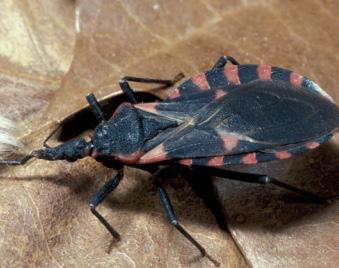
contains the pathogen that causes Chagas disease. Ashbrook explained that it’s not transmitted from the bite itself, but from the bug’s bloody feces getting rubbed into the bite, eyes, mouth or any open wound.
will contract Chagas disease.
To ease some stress, Ashbrook said that because of the infrastructure in the U.S., the potential of getting bit by a kissing bug is lower compared to South America where Chagas is more common. He said there were only 29 confirmed cases in the U.S. from 2000-2018.
“So what you should be concerned with is if you have outdoor animals, because kissing bugs are primarily an outdoor pest,” Ashbrook said.
Animals susceptible to infection include wildlife like raccoons, opossums and wild rodents. Domestic dogs and outdoor cats can also be infected.
The kissing bug also has a doppelgänger: the assassin bug. Ashbrook said the big difference is that kissing bugs have the orange marking and a more pointed head, hence the name “conenose.”
“If you see a kissing bug, just leave it alone,” Ashbrook said. “Now, if you find them indoors, that should be of concern.”
LSU associate professor in ento -
The biggest difference between Louisiana’s kissing bugs and those from other states is that the Triatoma sanguisuga doesn’t defecate until about 30 minutes after obtaining a blood meal. This means there is less of a chance that Louisianians see BUGS, page 5
BY DREW SARHAN Staff Writer
LSU scientists have discovered a subduction zone decaying near Vancouver Island in British Columbia, Canada that sheds light on how tectonic plates on the Earth’s surface evolve.
A Science Advances study authored by LSU geologist Brandon Shuck revealed a tear in the Juan de Fuca tectonic plate around 20-80 miles off the coast of Vancouver Island. The study revealed a subduction zone, where converging plates cause increased geological activity, tearing itself apart.
Shuck led the mission during his postdoctoral studies at Columbia University’s Lamont-Doherty Earth Observatory before coming to LSU last fall.
“These plate boundaries host the largest earthquakes, devastating tsunamis and explosive volcanism,” Shuck said in an email to the Reveille. “Our new study shows how subduction zones die off when a mid-ocean ridge — a divergent plate boundary where new oceanic crust is formed — approaches the subduction zone.”
The reason why the Pacific Rim, the land surrounding the Pacific Ocean, is highly volcanic is because the surrounding subduction zones create arc volcanoes. While volcanism is projected to increase in the
region over the next million years, the zone is not expected to create new islands.
“In the northeast Pacific along western Canada, the plate boundary is a transform margin, where the Pacific and North American plates are sliding past each other instead of colliding,” Shuck said. “So there is no active volcanism in that region. Our study shows that the sliding plate boundary is expanding, while the subduction plate boundary along [the] northwestern U.S. is getting smaller over time.”
The tear was caused when the dense and cold part of the subducted Explorer plate detached from the weak but warm lithosphere, the first layer of the earth including the crust and the outer mantle. Shuck’s study found that the Explorer microplate first started breaking off the Juan de Fuca plate about 5 million years ago.
“Geology is a fascinating discipline because the processes span immense scales in both time and space,” Shuck said. “Meaning that some things are very slow, some are fast; some operate at the tiny atomic scale, some at the scale of our planet. It turns out that plate tectonic movements operate at rates of only a few inches per year – but earthquakes are a rapid release of built-up energy in just seconds to minutes.”
Although recent geological ac-

tivity indicates active tearing of the plate, this process has likely been happening over the past million years, Shuck said. It may take another million years for the two plates to fully separate from each other.
“You’ll be shocked to learn that geoscientists consider this rapid for most geologic processes, which typically span tens of millions of years,” Shuck said.
While the discovery does show that Vancouver Island will experience an increase in volcanism and earthquakes associated with the
tear, the natural disaster outlook for the region hasn’t changed too dramatically. The region will still be prone to earthquakes and flooding. This is because the Cascadia subduction zone still serves as a boundary that can create massive earthquakes or tsunamis.
“In the short term, the finding does not change the outlook for natural disasters in the region,” Shuck said. “That is because, as mentioned, these geologic processes take millions of years, whereas large earthquakes in this area take place about every 400 years.”
FRATERNITY, from page 2
said that DKE had no members of its LSU chapter as of Oct. 1.
However, a public DKE LSU account has operated for over a month and posted while run by a student who identified himself to the Reveille. That Instagram account also issued a statement to the Reveille last month regarding the chapter’s return.
The student behind the account had previously indicated in messages with the Reveille that he’d been in contact with national DKE representatives and said he and another student had formed an interest group for the chapter.
All but one of the account’s posts have since been deleted, including one depicting the DKE fraternity house. Additionally, DKE held an event at Murphy’s Bar on Sept. 22.
Robb told the Reveille that the creation and operation of the Instagram were unauthorized and that DKE International will be attempting to gain control of the account. Robb didn’t confirm if the event at Murphy’s was authorized. He described the student running the Instagram account as “one of the students that is interested in joining the organization.”
It’s unclear on what authority the student created the account and issued a statement, though he said the statement came after “alumni discussion.” The student later told the Reveille that DKE nationals requested that he not “speak to anyone about anything.”
Background on the suspension
Founded on campus in 1923, DKE is one of the oldest fraterni-
ROYALTY, from page 3
like founding God’s Ambassadors, her Bible study. She said she started it on campus with only five people, and now it has grown to over 200 people.
After graduation, Walker hopes to grow her youth mentorship program for children with alopecia, Alo Bloom. She also plans to put her entrepreneurship minor to use by opening a business.
VET MED, from page 4
Jackie Simon said she primarily cares for the small animals while Megan Simon and Oliver handle the large animals and ambulatory calls. They often travel to farms to treat livestock, sustaining St. Martinville’s agricultural roots.
As the only veterinary clinic in St. Martinville, Country Place still faces challenges.
“Sometimes there’s an inability to see everything and everyone,” Jackie Simon said.
Nevertheless, this motherdaughter vet team tirelessly works to serve the community. Simon said Country Place Veterinary Clinic will continue to grow and provide services to the surrounding areas in small animal, large animal, livestock and exotic animal care.
ties at LSU.
The group’s 2019 suspension followed a thorough hazing investigation, during which pledges told LSUPD about several incidents they endured, including intense physical violence that left pledges with visible injuries.
Pledges were allegedly forced to lie on broken glass as members poured gasoline and urinated on them. Some were also allegedly forced to strip and get into an ice machine for 45 minutes, where they remained for fear of being physically assaulted.
One member arrested for hazing-related activities and seconddegree battery was alleged to have kicked pledges while wearing steel-toed boots as they completed push-ups. Another allegedly struck pledges with a silver pipe, punched them and kicked them.
Pledges told LSUPD of other hazing incidents members allegedly subjected them to. One pledge said the worst were “new boy showers,” where pledges held milk crates filled with ice and cayenne pepper above their heads as cold water ran. They were forced to look up at the crates as the water and pepper melted in their eyes.
Police reports detailed many more horrific and painful alleged instances of hazing. Police also found the fraternity’s chapter room had references to initiation rituals written on the walls, as well as the threat “all narcs will die,” according to The Advocate.
In total, nine DKE members were arrested for hazing activities during the fall 2018 semester, all of them suspected of criminal hazing, and some for felony battery. There’s no record that any indictments or
Walker encouraged students who are looking to get more involved on campus to start by talking and networking with classmates.
“Do your work, be nice to everyone you meet and look at everyone you meet as a networking opportunity,” Walker said.
In terms of becoming Homecoming Queen, Walker said that is something that starts freshman year.
charges were ever issued, with East Baton Rouge Parish District Attorney Hillar Moore citing a lack of cooperation from potential witnesses, according to The Advocate in 2020.
DKE was also known for controversial and often offensive game day banners. The chapter’s banners ranged from poking fun at opponents to making references to the Casey Anthony murder trial, the Aurora, Colorado movie theater shooting and the Kent State shooting. They also sometimes included racist and homophobic references.
The national DKE organization issued a statement in 2014 saying it was “embarrassed” by the LSU chapter regarding one “tasteless” banner that referred to the openly gay NFL player Michael Sam.
The chapter had some history of violations prior to the 2019 suspension. It was suspended from November 2006 to June 2007 with an additional two-year “introspection period” after a misconduct investigation found a goat in the house.
K.C. White, the dean of students at the time, said some members reported it was the chapter mascot. Officials told The Advocate the incident raised questions about whether pledges were “forced to do anything with the goat,” though White at the time told the Reveille authorities concluded there was no mistreatment of the animal.
The chapter was also reprimanded in January 2015 for violating a rule in the university code of conduct and again in November 2017 for violating an alcohol policy.
Pi Kappa Phi was suspended by the university in May 2019 after initially receiving an interim suspension when the investigation began in October 2018. The chapter was
“Homecoming Queen is not something you become; it’s something you be.” Walker said.
“You have to start being that Homecoming Queen freshman year in your classes. Wear your crown everywhere you go.” Walker said that Campus Life told her she broke the record at LSU for most votes for Homecoming Queen. Walker is the third Black woman to win Homecoming Queen at LSU, and her and King T’Senre Gray
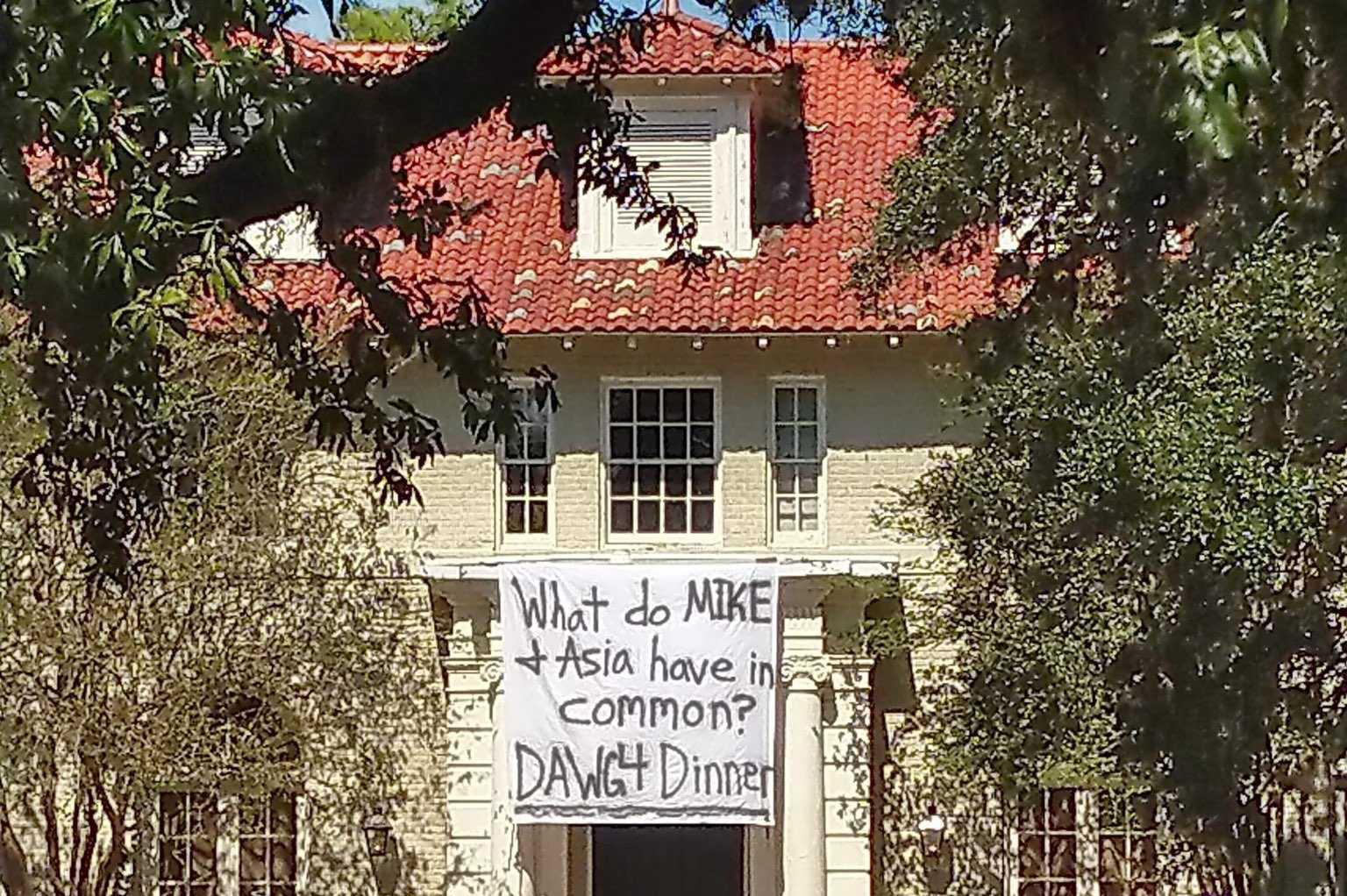
charged with hazing, coercive behavior, failure to comply, endangerment and violating alcohol guidelines.
An incident report provided to the Reveille shows that the university’s investigation was prompted by allegations it received that a group of new members came out of the Pi Kappa Phi house around 1 a.m. one night looking “terrorized,” and some were also “forced to go strip.”
The DKE and Pi Kappa Phi suspensions came at a time when the university was placing increased focus on hazing after the 2017 death of Max Gruver, an LSU freshman who was forced to drink excessive amounts of high-proof alcohol during a Phi Delta Theta hazing ritual and died as a result. Gruver’s death prompted the state to pass a law making hazing a felony.
LSU currently has four fraternities suspended, according to its
together are the second Black King and Queen pair.
To Walker, no other university is like LSU. She loves the school pride surrounding football games, professors and students. Despite being from Arizona, Walker said Louisiana feels like home.
“I wanted to come here to experience the Louisiana feel and the home feeling of being somewhere where you’re loved,” Walker said.

public community scorecard, as well as one sorority. Another sorority is currently on probation.
Ending hazing is an ongoing battle in Louisiana. Caleb Wilson’s death in March, after he was punched in the chest several times while pledging for Southern University’s Omega Psi Phi chapter, has sparked a renewed effort to crack down on hazing.
Lawmakers subsequently created the Caleb Wilson Hazing Prevention Task Force, which has so far met twice. McClure-Brown, Belanger and LSU General Counsel Trey Jones are members.
At its most recent meeting in September, the task force considered revisiting a 2024 law that requires universities to produce clear and convincing evidence to punish students for hazing in favor of a standard that would make it easier for colleges to penalize perpetrators.
BUGS, from page 4
mology Kristin Healy said the risk of catching Chagas disease hasn’t necessarily changed, but awareness around it is increasing. In September, the CDC declared the disease endemic, meaning it is constantly present in specific geographical areas. This excludes the U.S.
By spreading awareness about kissing bugs and Chagas disease, Healy said she hopes that more people get tested since many cases go unreported.
“I think it’s really hard to determine the actual risk,” Healy said. “I don’t think the risk has necessarily changed, but maybe our knowledge of risk is limited.”
The director of public health programs at Loyola University New Orleans Erin Cloherty has spent a lot of time studying Chagas disease, specifically in the raccoon populations of New Orleans.
Cloherty said that it is important to know that Chagas disease is not transmissible from person to person.
Because of climate change, Cloherty said that there is an expansion of these insects across the U.S. With this, their reservoirs will expand, meaning more wildlife will get infected.
“If you live in places that are dilapidated, then there is more of a chance of the insects to come in and seek shelter in there, and then seek food sources.” Cloherty said.
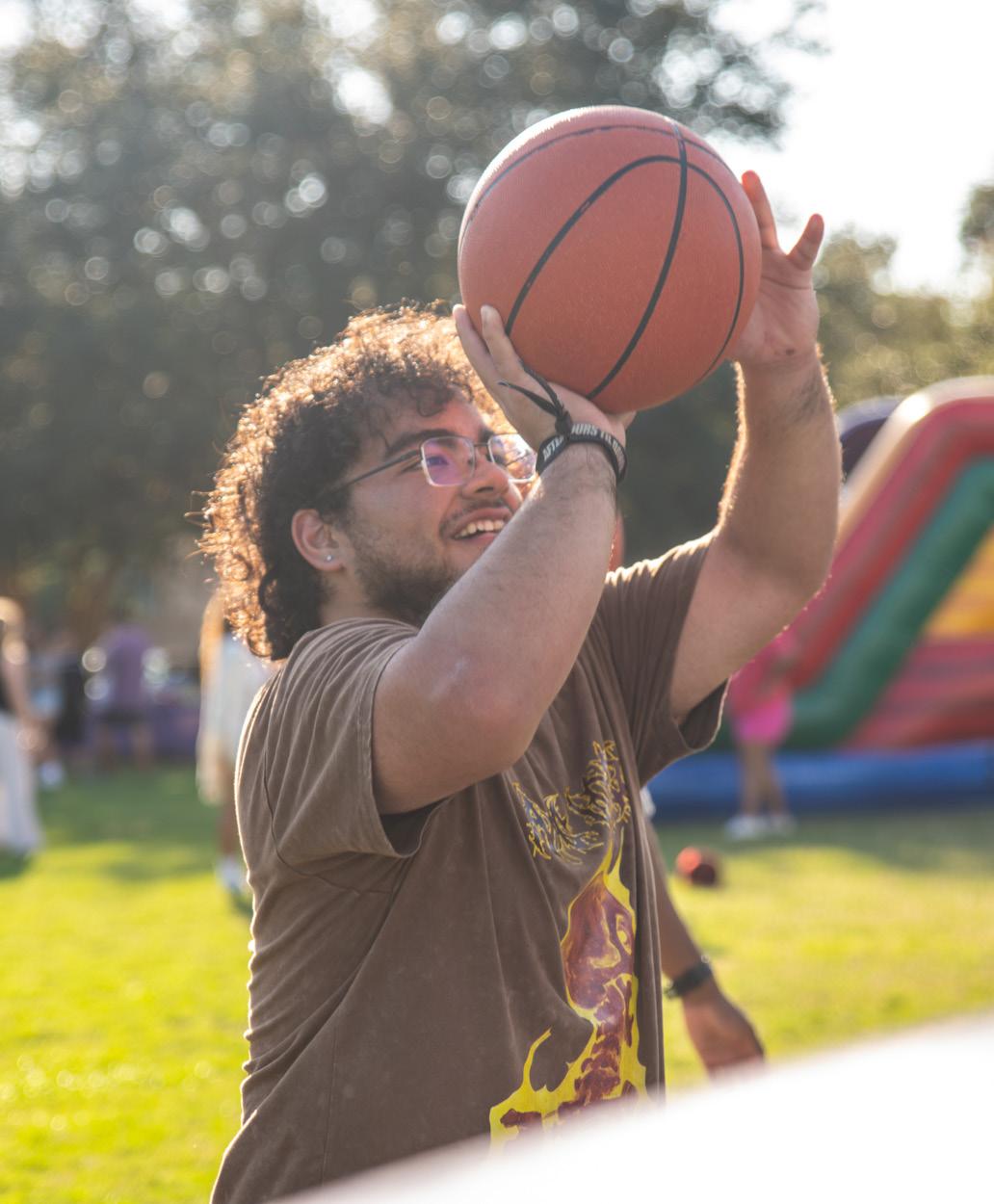
Right: A member of the Kappa Alpha Psi Fraternity perform on Oct. 10 during the NPHC Homecoming Step Show in the LSU Union Theater.
Left: LSU freshman Galen Gonzalez shoots the basketball at the SG Geaux Play Zone at the Parade Ground on Oct. 7.
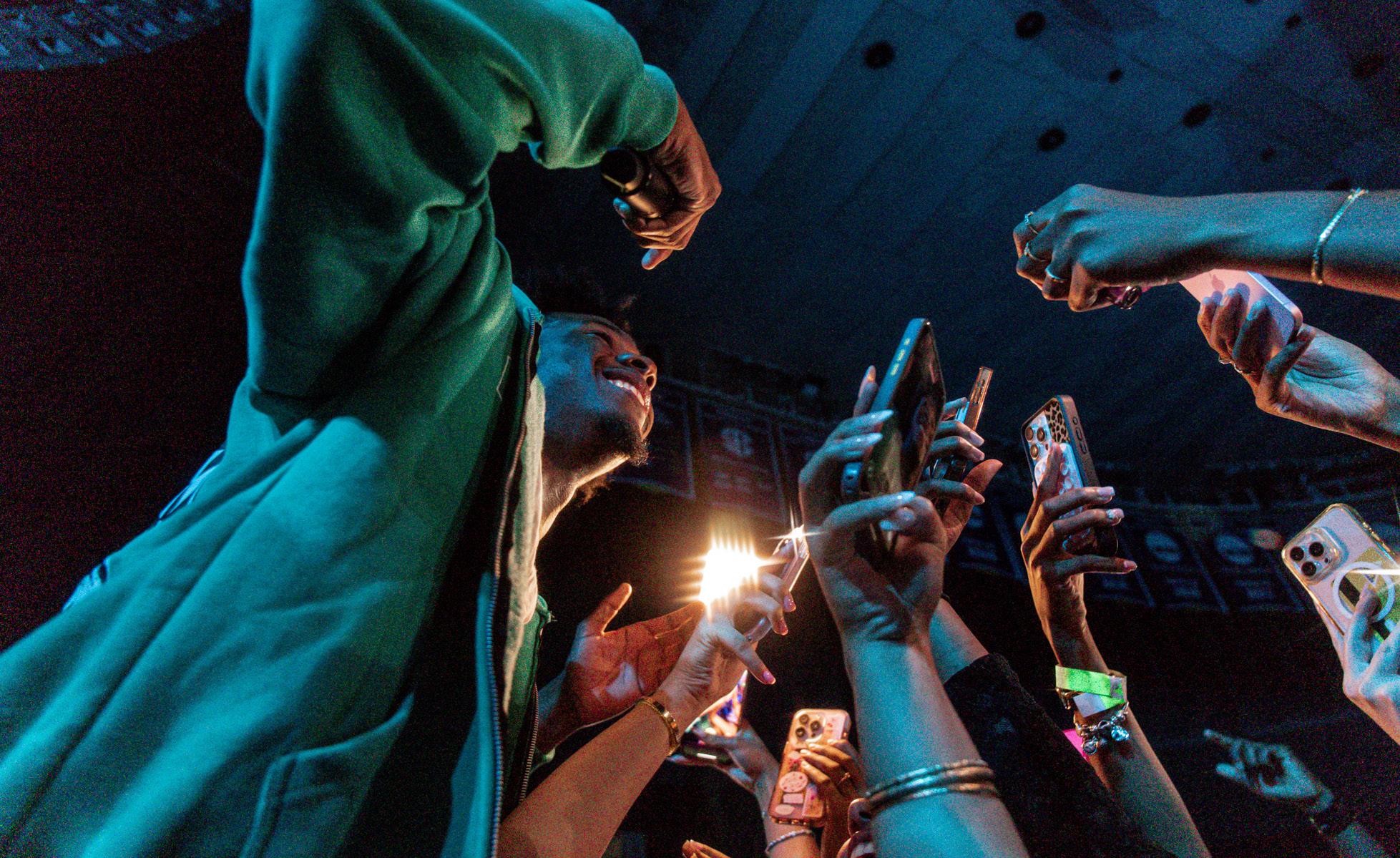

Above: ZEDDY WILL sings Oct. 9 at the Pete Maravich Assembly Center.
Left: A student kicks a soccer ball towards a target at the SG Geaux Play Zone at the Parade Ground Oct. 7.
Right: Models pose together before walking the stage on Oct. 8 during the Fashion Sheaux hosted by LSU Residential Life in the Royal Cotillion Ballroom at the LSU Student Union.
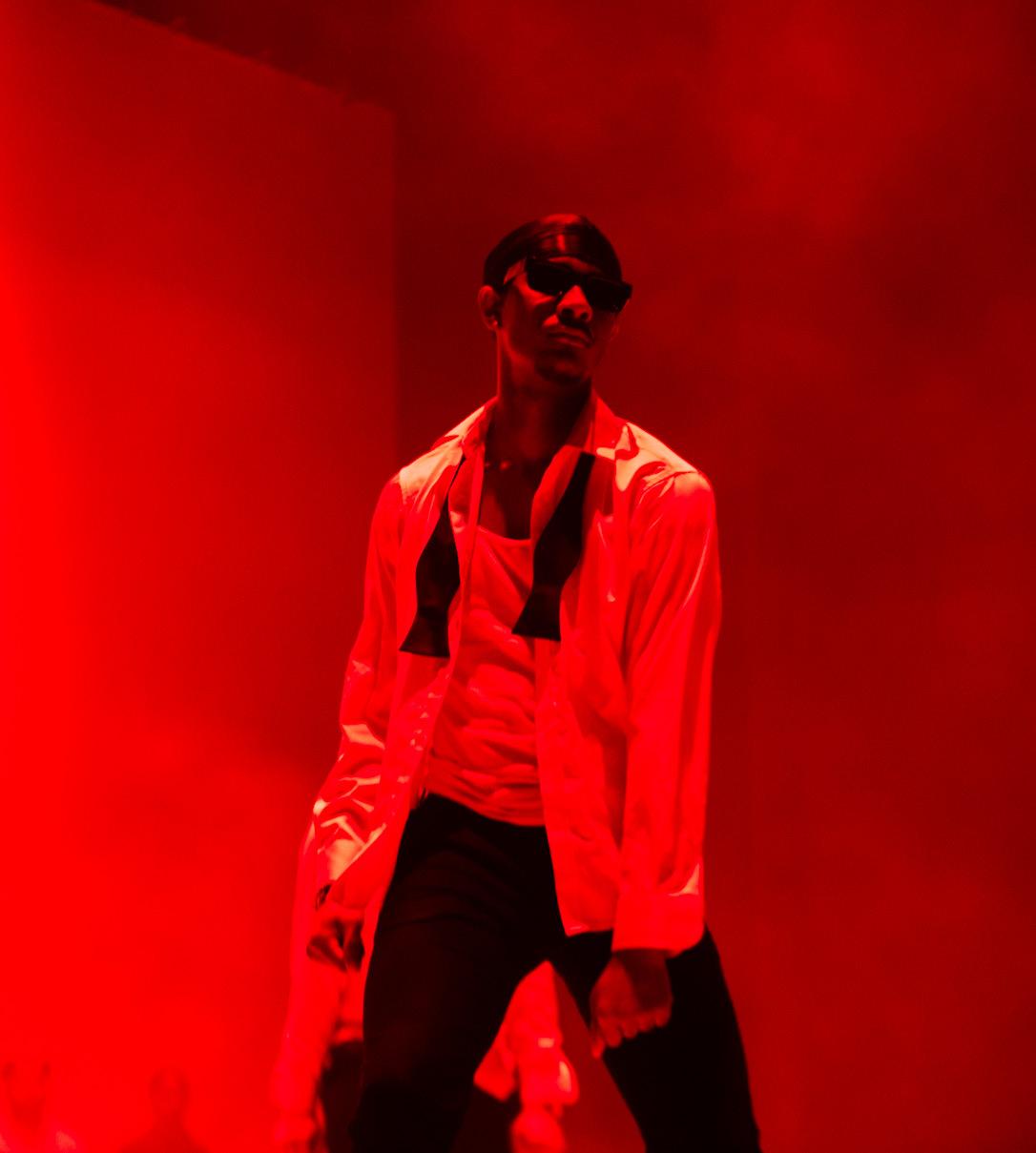
The 100th annual LSU Homecoming in Baton Rouge, La. If you missed festivities
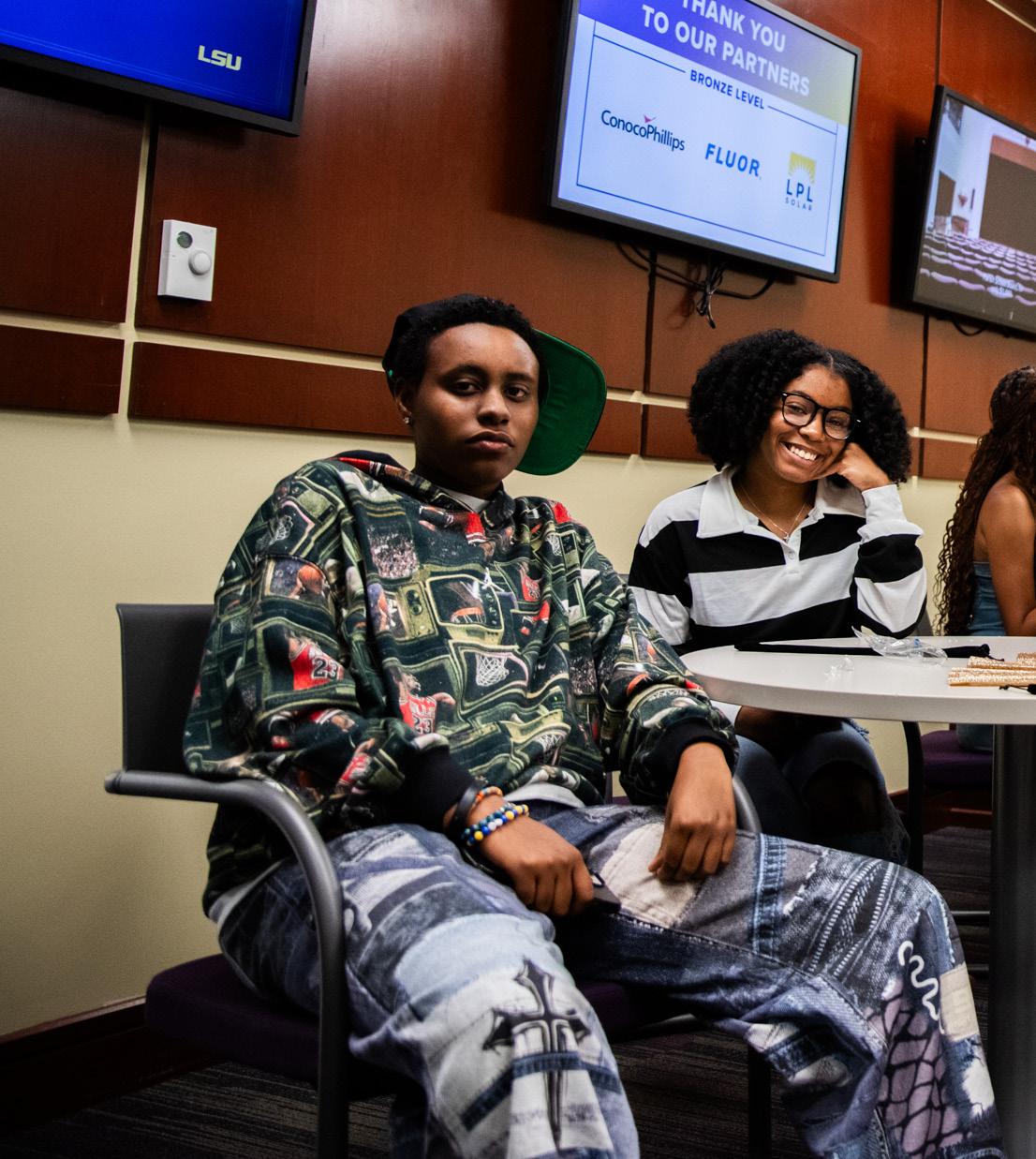
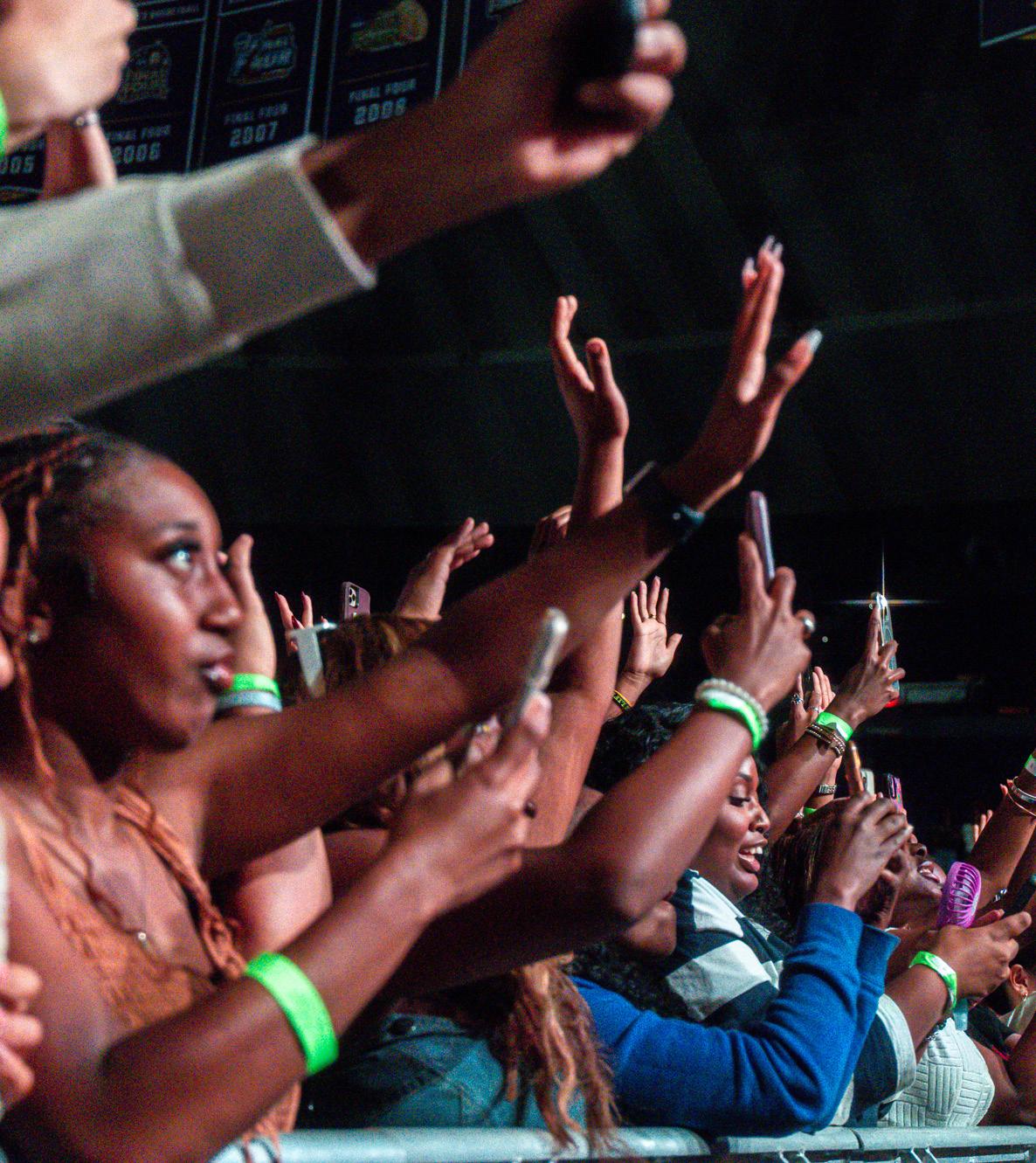
Homecoming took place last week missed out, relive the week’s festivities here.
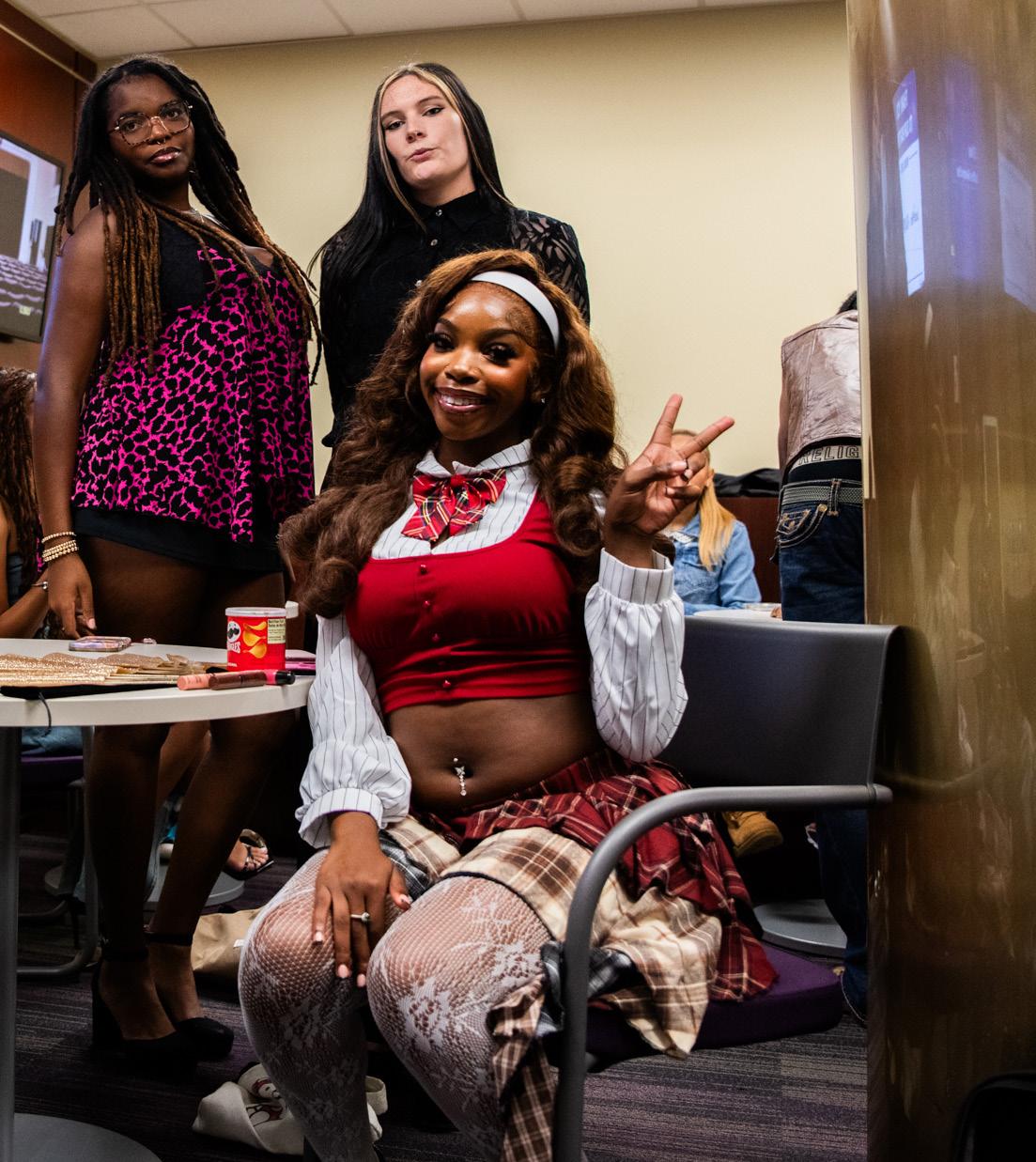
Right: A member of The Zeta Phi Beta Sorority holds a pose on Oct. 10 during the NPHC homecoming step show at the LSU Union Theater.
Left: The crowd sings Oct. 9 at the Pete Maravich Assembly Center.
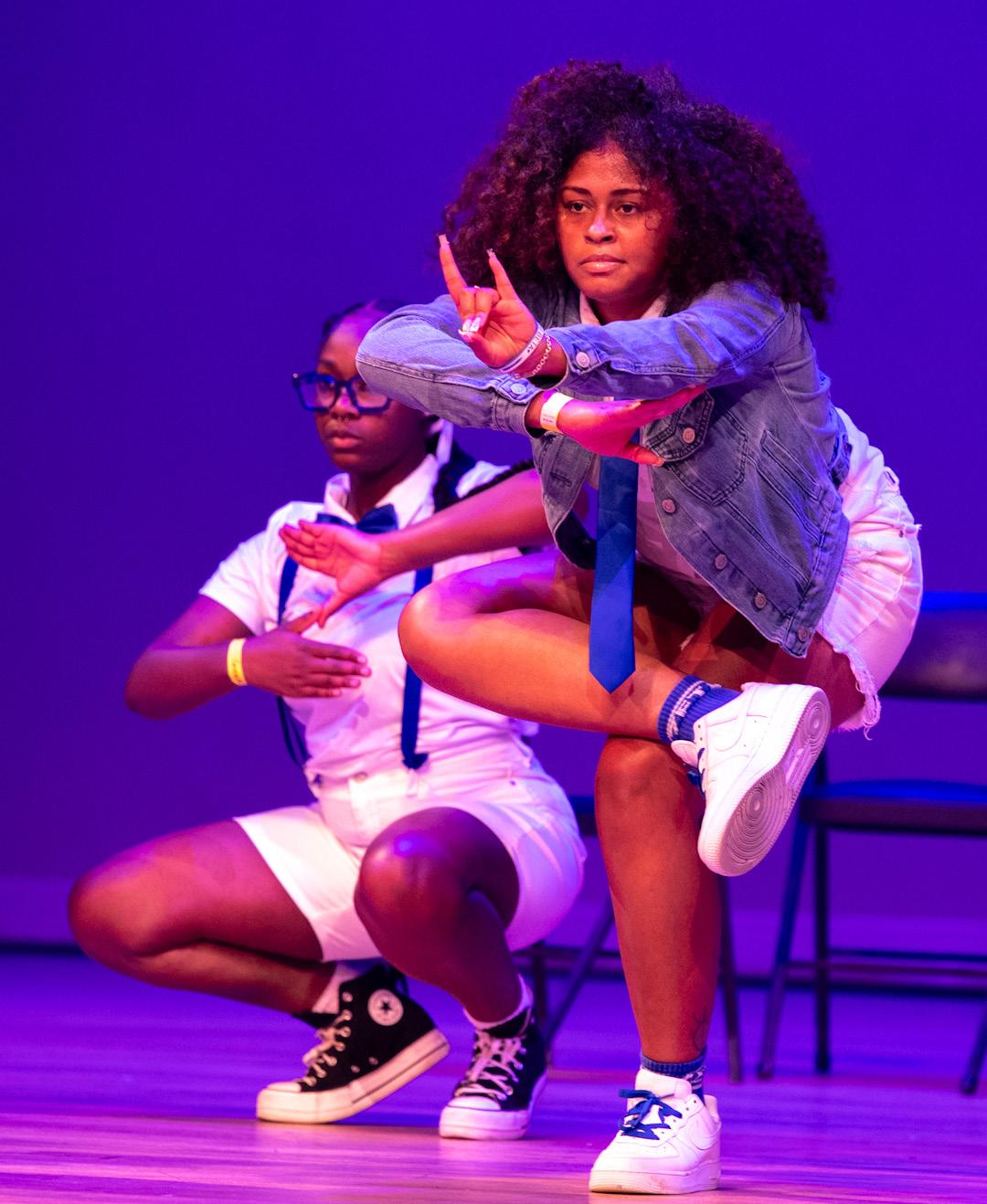
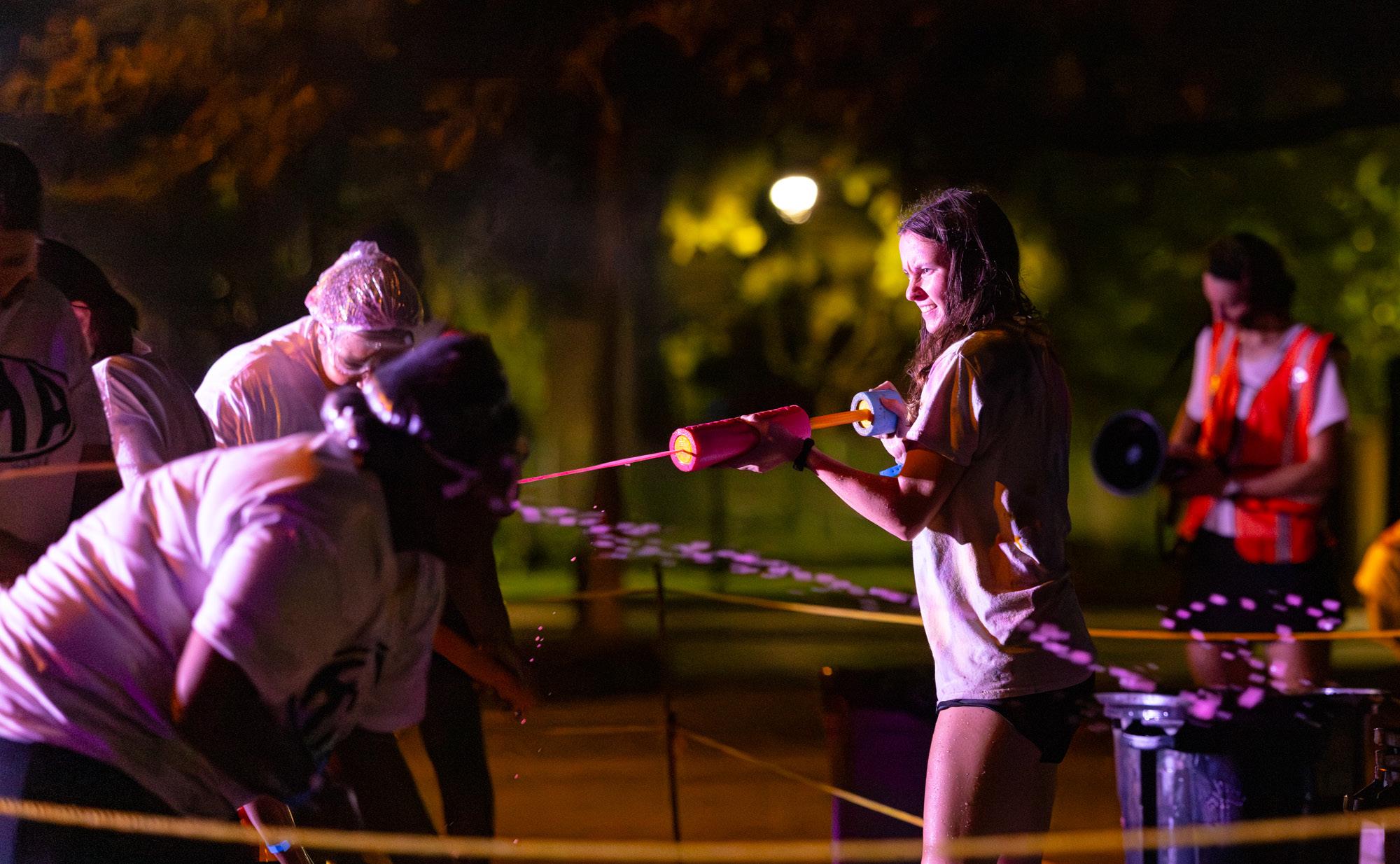
Above: A student sprays another with colored dye during a round inside the Pit during RHA Splatterbeat at the Parade Ground Oct. 6.
Right: LSU freshman mass communication student Sierra Joseph holds up a skirt she designed on Oct. 8 during the Fashion Sheaux hosted by LSU Residential Life in the Royal Cotillion Ballroom at the LSU Student Union.
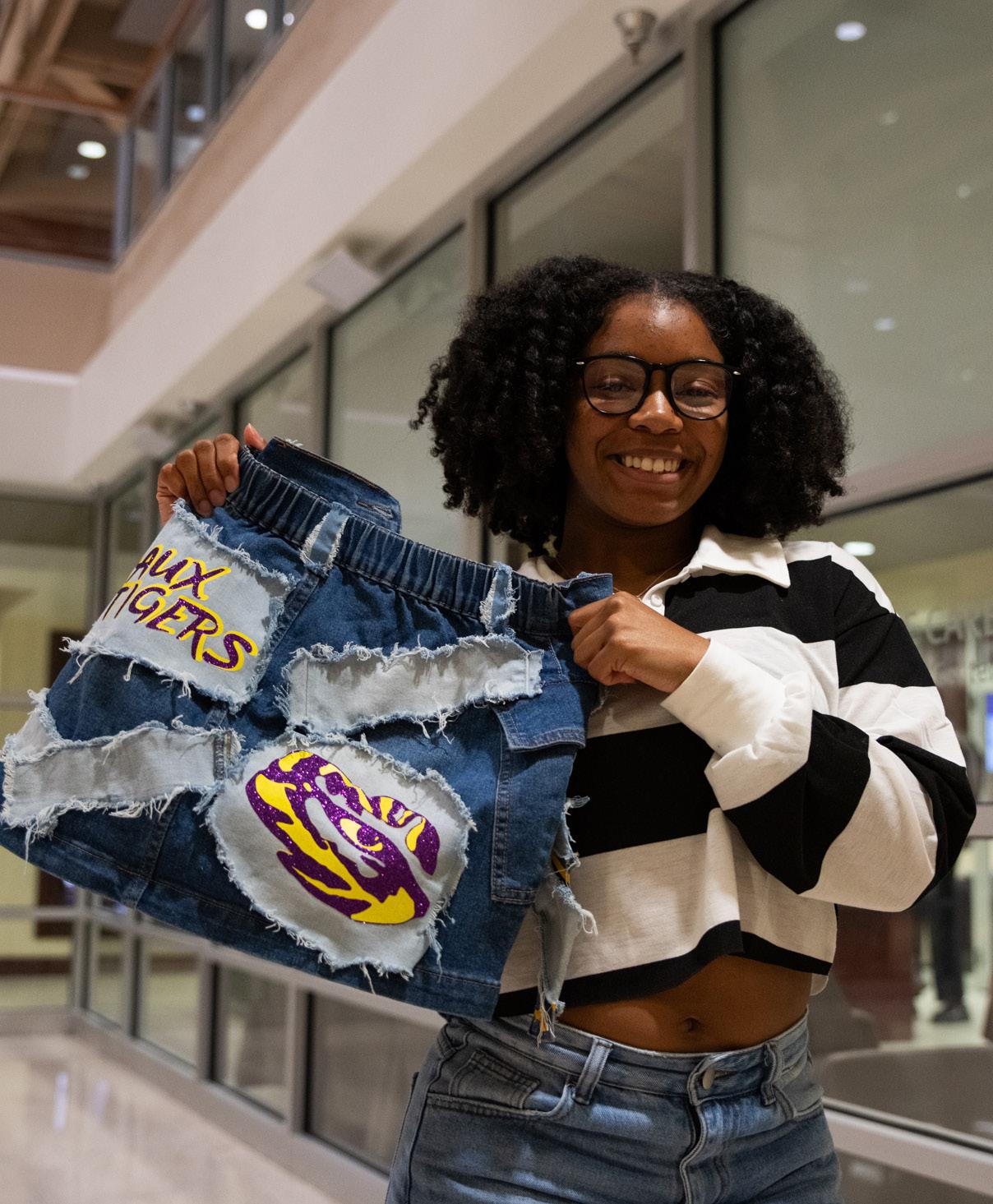
BY MIA HATTAWAY Staff Writer
LSU’s National Panhellenic Council hosted its annual Homecoming Step Show, on Friday, Oct. 10, where eight fraternities and sororities competed for a cash prize at the Union Theater.
“It’s a big representation of Black culture, especially in college,” Alpha Kappa Alpha member Ryan Rice said on the importance of having a step show. “It displays the diversity at LSU, shows the historical legacy of the Divine Nine and highlights just how large and impactful our community is, as all nine organizations that make up the National Panhellenic Council are active on LSU’s campus.”
The NPHC is an overarching organization which comprises nine historically African American fraternities and sororities, which are referred to as the Divine Nine.
On being a member of a D9 organization, Omega Psi Phi member Craig Walton Jr. said it’s been an important part of his time at LSU.
“It’s allowed me to be more involved on campus and in the community,” Walton said.
Kicking off the night was the Kappa Alpha Psi Fraternity Inc., known as the Nupes. Their performance told a story of escaped convicts “charged with public displays of pimping” evading the police.
The group highlighted their talents with canes, adding to the sonic impact of the synchronized footwork. Canes are an especially important part of the Kappa Alpha Psi legacy, representing gentlemanship, playing homage to Black history and reflecting the values of the organization.
With songs like “Shot Callin” by YoungBoy Never Broke Again and “Wipe Me Down” by Trill Family, the Nupes gave an engaging performance.
Up next were the members of Delta Sigma Theta Sorority Inc., who constructed a Jumanjiinspired show where they had to complete three rounds of stepping to transport themselves out of a video game and back into real life.
Starting with “Diva” by Beyoncé and ending with “Turn The Beat Up” by Trill Fam, the group gave an absolutely electric performance. With strength and endurance at the core of every step, they proved to encapsulate the energy of their unofficial mascot: the elephant.
Alpha Phi Alpha Fraternity Inc., known as the Alphas, followed with a show centered on the Creed films. Making reference to a viral edit of the movies, the performance started with “a good man with a broken heart”
by LoVibe, a remix of a Kendrick Lamar track. The edits utilized sharp beats to accentuate physical moments, such as punching. This effect was similarly used by the Alphas in their performance.
The organization creatively took advantage of coordinated stomping and illustrative choreography to represent several rounds of a boxing match. Toward the end of the performance, they grounded the act by taking a diegetic ad break with the NOLA bounce version of the viral Jet2Holiday sound.
Next to have the spotlight was the Iota Phi Beta Fraternity Inc. Called the Iotas, the members performed a story based on the 2003 movie “Holes,” where young boys are forced to dig holes at a detention camp in a desert.
“You’ve got to dig” has become one of the most recognizable chants in the Iotas performances, making the story all the more relevant.
Succeeding were the members of Zeta Phi Beta Sorority Inc, known as the Zetas. Their performance was a play on “The Breakfast Club,” where the group of eclectic characters have to spend detention together.
The Zetas used their story setting brilliantly, with the detention being one line of chairs. When the characters began embracing their proximity, they started bonding by making beats on each other’s legs. As the story continued, this became a gorgeous chorus of leg patting, foot stomping and chanting.
Up next was the Omega Psi Phi Fraternity Inc., whose members are referred to as Ques. Taking inspiration from hit horror film “Sinners,” the organization retold the story through the lens of step. The Ques referred to the film with the lines like “Nah, we’re cousins” and calling out their “who’s that knocking on my door” chant, playfully spinning the idea of vampires having to be invited in.
Members of the group changed costumes throughout the performance, ridding their dapper suits for bloodied undershirts. This imagery bore a striking resemblance to the film in question. The performance ended with a Que, portraying Therise, playing the trumpet as the rest of the group finished stepping.
Following the captivating performance was Phi Beta Sigma Fraternity Inc., with the Steppers University. Nicknamed the Sigmas, this performance followed a group of young adults learning the history of stepping.
The educational show highlighted the importance of heritage as it described the African origin of stepping, as well as the history of stepping with canes. According to the show, Sigmas were the first
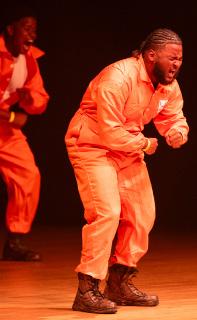
on Oct. 10 during the NPHC homecoming Step Show at the LSU Union Theater in Baton Rouge, La. fraternity to incorporate them into their performances.
Rounding out the night was the Alpha Kappa Alpha Sorority Inc., who opened with “LET HER COOK” by GloRilla. The members, referred to as AKAs, had to step in order to activate a golden ivy to affirm being the “ultimate Alpha Woman.”
Alpha Kappa Alpha Sorority Inc. was the first Black Greekletter sorority created, founded in 1908. During their show, they prioritized messages of leadership, morality and legacy.
With each round of stepping, the ivy glowed more and more until it was completely illuminated. To round out the performance, the group strolled to “That’s What They Like” by Boosie Badazz.
“There’s only one king and queen of the stage in the step show,” Omega Psi Phi member Charles James IV said. After the AKAs performed, it was time to find out who would take the crown home.
At the end of the night, an esteemed panel of judges, who are all members of D9 organizations themselves, came together to crown one fraternity and one sorority as the winners of the Step Show. The Que’s “Sinners” show alongside the Delta’s Jewel-Manji show took the crowns.
“We put a lot of time and effort into our shows,” Omega Psi Phi member Demetrius Rowland said. “To come out victorious was a feeling like no other.”
Though the curtains closed on NPHC’s 2025 Step Show, each stomp, clap and chant echoed the living legacy of the Divine Nine. This event continues to be more than a competition; it is a celebration of heritage, unity and passion that is at the core of each of the organizations represented.

BY DELANEY POTTHAST Staff Writer
In soccer, stats matter, but they’re never the entire story. Goals and assists affect the score, but what often changes the game is the passion and energy that keep a team’s momentum high.
For LSU, freshman forward Sariyah Bailey has quickly become that spark after finding her way from all over the world to her father’s home state of Louisiana.
Before becoming a Tiger, Bailey began her career at the age of 6 in Edmonton, Canada. Soccer became her passion at a young age and her skills quickly made it clear
that she had talent.
“As soon as I started walking, I started kicking the ball around,”
Bailey said. “Six was when I first fell in love with the sport.”
She grew up on the pitch, but what really drew her in was watching her older sisters play.
“It was just the moment I never wanted to stop playing,” Bailey said. “I never wanted to stop running. I just fell in love with it. I wake up and I want to do it, and I go to sleep wanting to do it every single day.”
Bailey excelled while playing in Canada, and by the time she was 16, she knew she needed to take her talent to the next level.
In 2023, Bailey traveled to England, where she played for the girls’ performance soccer team at Mount Kelley High School.
While playing under the Chelsea FC umbrella that year, she managed to win two national championships and became a highly touted Division I prospect heading into her senior year of high school.
Even after talking with Florida, Bailey decided to commit to the Tigers for her future as a collegiate soccer player. Since arriving in Baton Rouge, Bailey’s presence on the team has been immense, but adjusting to life in Baton Rouge wasn’t all about soccer.
“The weather was a big jump,” Bailey explained while laughing. “In Canada, it’s really dry and really cold. But with the amazing staff that we had, I came in about a month early.”
Her father, Fred Bailey, talked highly of head coach Sian Hudson, mentioning how generous she and the coaching staff were in offering to travel to England to recruit his daughter.
From there, LSU felt more like a home to the Baileys, and the extra time to adjust has allowed Bailey to carve out a valuable role both on and off the field.
see SOCCER, page 10

BY AINSLEY FLOOD Deputy Sports Editor
After the bye week, LSU and South Carolina both entered this Week 7 matchup with something to prove.
The Tigers cracked under pressure and took a loss against Ole Miss, while the Gamecocks were already down 3-2 before Saturday’s game. They sought revenge for last year’s game, as LSU stole the lead within the final minutes.
That didn’t matter for the Tigers, though, who got the job done in a 20-10 win in Baton Rouge.
Defense saves the day, but still has weaknesses
LSU’s defense bent, but ulti-
mately never broke against this South Carolina offense, holding it to just 10 points.
There was one big slip-up of the night, which was allowing a jaw-dropping 72-yard touchdown from Matt Fuller in the first quarter. The Gamecocks went ahead 7-3 and proved why the Tigers can’t solely rely on their defense.
“We’re not perfect,” head coach Brian Kelly said after the game. “We’re a work in progress. We’ll have to be better next week.”
After that, the unit was airtight when it mattered most. South Carolina quarterback LaNorris Sellers only passed for 124 yards and was intercepted once by Tamarcus Cooley. The Tigers’

BY ROSS ABBOUD Staff Writer
On Wednesday, former LSU women’s basketball star Angel Reese announced on Instagram that she’ll be participating in the Victoria’s Secret 2025 Fashion Show. Reese’s addition to the annual fashion show will be the first time a professional athlete will walk its runway.
“I’m finally getting my wings,” Reese said in her Instagram post.
pass rush was unrelenting, making five sacks, yet another seasonhigh. They also completely shut down the red zone, not letting a single player make it past the 20yard line.
Defense may not be able to win championships, but it played a large role in this win. However, this game showed LSU’s offense that it shouldn’t be dependent on the defense. Nussmeier and offensive line continue to stall progress
Quarterback Garrett Nussmeier’s performance was representative of this LSU team: talented but inconsistent. He passed for an impressive 254 yards and two touchdowns, but his mistakes made this a closer game than it
should’ve been.
The offensive line continued to be up-and-down and struggled to create running lanes. Yet, the running game saw slight improvements as LSU managed a season-high 166 rushing yards, and Nussmeier wasn’t afraid to run, with his longest on the night being 23 yards.
He and the offense proved they have the ability to be explosive, but they had trouble capitalizing on any momentum with three turnovers and a battered Nussmeier visibly limping throughout the night. An injured quarterback is not a reliable one, but that’s exactly what LSU has.
see TAKEAWAYS, page 10
The 23-year-old basketball player wrapped up her second season as a forward for the Chicago Sky. She’s a two-time WNBA All-Star and set the league singleseason record for rebounds in her rookie year.
In her collegiate career, Reese transferred to LSU for her junior season and went on to lead the 2023 team to the program’s first national title, along with being named the Most Outstanding Player.
The show began in 2001 and took place annually until 2019, when Victoria’s Secret cancelled the show for four years amid declining ratings and controversy. The event returned in 2024.
The 2025 show will feature performers Missy Elliott, Madison Beer, KAROL G and TWICE.
The 2025 Victoria’s Secret Fashion Show will be held on October 15th at 7 p.m. in New York City.
TAKEAWAYS, from page 9
“There are some things that we just have to clean up,” Kelly said. “They’re very fixable, and if we can fix those things, this offense can play to the level of its defense, and that’s what we need to get to.”
Trey’Dez Green is back big-time
Green hauled in eight receptions for 119 yards and one touchdown. His standout performance marks the first time an LSU tight end has gotten more than 100 receiving yards since 1994. He was also responsible for some of the
PROGRESS, from page 3
in almost every category. The fifth-year senior finished the night with 254 yards on a 61% completion rate after throwing 20 for 33. The only faulty side of Nussmeier’s play was his two interceptions in comparison to Sellers’ one.
Sellers was 15 of 27 to finish with a 56% completion rate and 124 yards. He rushed for 19 yards of his own, but took 22 attempts to garner that amount. Nussmeier rushed for 30 on four attempts.
The performance from Nussmeier goes hand in hand with his receivers, who all played a vital role in the 420 yards of offense in comparison to South Carolina’s 317.
“I thought he was a lot more aggressive,” Kelly said about Nussmeier’s performance. “He had that demeanor that you’re looking for in your quarterback… he’s competing his tail off for us.”
The offensive line still showed its typical signs of weakness, allowing four quarterback hurries and two forced fumbles from the Gamecock defense.
In comparison, LSU’s defense continued to put the offense in good field position, especially after Patrick Payton recovered the fumble on South Carolina’s first play of the game.
Despite a strong play from the defense, the offense failed to complement it and settled for a field goal, even though it started at South Carolina’s 17-yard line. LSU once again found itself letting a good scoring opportunity go to waste, only making four plays the entire drive and failing to convert on 3rd-and-3 on South Carolina’s 10-yard line.
The weak drive left an even worse taste in LSU fans’ mouths when the Gamecocks followed this up with a scoring drive consisting of three plays total. A 72-yard rush up the middle by redshirt freshman running back Matt Fuller led to South Carolina being up 7-3 early in the game.
Still, the receiving corps held out and delivered in crucial times. This would be the last time South Carolina had control of the contest.
Sophomores Ju’Juan Johnson and Caden Durham highlighted LSU’s run game. Johnson averaged 13.2 yards per carry on five attempts to accumulate 66 yards on the night. Durham contributed with both rushing and receiving yards, finishing with 70 rushing on 15 attempts and 17 receiving on one catch.
Although he finished the night
biggest plays of the night.
“Clearly, he’s a mismatch,” Kelly said. “You can throw fade balls to him. He can catch the ball on quick game. He’s a unique talent, and we need to continue to feature him in our offense. He’s got to be part of it.”
His touchdown catch in the second quarter made it 10-7 Tigers. Once back in front, LSU never trailed again.
Green helped make the entire passing game function, and the sophomore’s return to form is a much-needed boost for this offense.
without a touchdown, Durham’s consistent scrambling set up scoring opportunities for LSU.
To start the second quarter, Durham rushed up the middle for 23 yards, his most on the night, during the third play of the first drive. A 14-yard pass completion to sophomore Trey’Dez Green followed, and the drive was ended by Nussmeier’s 6-yard completion to Green for LSU’s first touchdown.
Green made his presence known greatly against the Gamecocks. Along with the touchdown, Green led all receivers with 119 yards on eight catches, with his longest catch being 24 yards to get within first-and-1.
“He’s pretty good at football,” Kelly said with a laugh. “Clearly, he’s a mismatch… He’s a unique talent and we need to continue to feature him in our offense.”
But with LSU’s strengths will always come its weaknesses, which seems to be the most reliable part of its play thus far. The drive, right within reach of another touchdown, ultimately ended with a good field goal, putting LSU up 20-10 with 1:50 to go in the game.
Sometimes you just have to take the easy points in football, but for a team with talent like LSU, executing and finishing in situations like this is the expectation, not the dream. Still, Kelly knows rather than to drill his players in the moment, push them to move on and compete.
“Those are catastrophic mistakes, but they overcame them and kept playing,” Kelly said.
Regardless of how the last LSU drive ended, bright spots were seen in other players. Sophomore Kyle Parker hauled in LSU’s only other touchdown, finishing the night with five catches and 75 yards. His touchdown was set up by two highyardage gains by Green.
LSU still has its work cut out for it if the team wants to reach the complementary play it so desperately needs to stay in playoff contention. The next test will be on the road at Vanderbilt, which will be the Tigers’ earliest kickoff of the season so far. LSU has a chance to show whether it can fight on the road or not, and it’ll surely be a battle test ahead of Texas A&M, too.
No. 10 LSU and No. 17 Vanderbilt will kickoff at 11 a.m. on ABC on October 18.
“We’re not perfect, we’re a work in progress,” Kelly said. “We’ll have to be better next week, but I kind of look at it like, we know where our weaknesses are.”
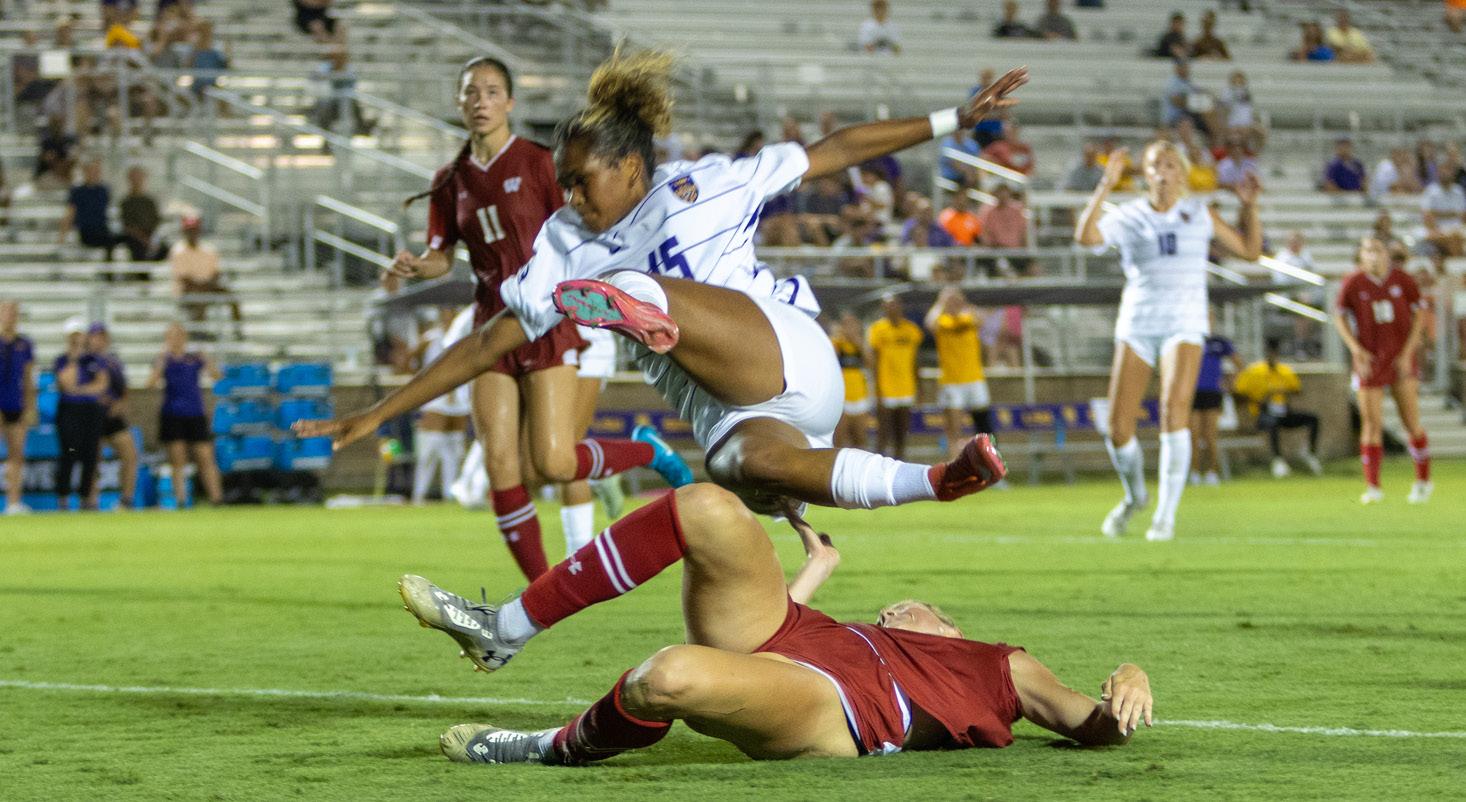
, from page 9
Her maturity and confidence have been evident since stepping into the starting lineup alongside team veterans. When thinking of this achievement, Fred recalled the moment he knew her talent was next-level.
“She was four years behind, so she was always the younger sibling trying to keep up with the older sisters,” Fred said. “I think we really saw that she had something special when she was five, she would play soccer with the eight and nine-year-olds, like her older sisters, and she actually scored a goal.”
Even at a young age, the freshman studied film on her own time, always pushing to be better any chance she got.
On the field, one standout quality is her originality.
“I like being creative on the ball,” Bailey said. “I love scoring and creating chances, and I think that’s something I can really bring to this team.”
It’s reasonable to say her breakout moment with the team was in
the September matchup against Wisconsin.
“It was my first assist,” Bailey said. “That cross last minute of the game against Wisconsin, and Ava Galligan finished it off. I think that was just one of the best feelings ever.”
Since then, the true freshman has reached five goals and five assists, always delivering when it matters most. Bailey earned her second goal of the season in a game-changing moment against Alabama, when she evened the score 1-1 after the Crimson Tide got the jump right before halftime.
That team-player mindset has become second nature, and the energy she brings to the field is what makes her a leader on the rise.
Her camaraderie doesn’t just stay on the pitch either. Natalie Dvorakova, another fellow freshman for the Tigers, described Bailey’s presence outside of the stadium.
“She’s a very talkative person, so off the field she talks to everyone and spends time with everyone … we appreciate her,” Dvorakova said.
This natural affinity could be credited to the constant support she has in her corner, as many of Bailey’s family members have made it out to her games.
“Knowing that we got you no matter what, I think that has helped her whole life,” Fred said. “It’s one of the things where we just wanted to be there, we just wanted to show our support when it’s so far away from home.”
It has given her the foundation to dream bigger, and the rising star’s goals go beyond the collegiate level.
“I want to go as far as possible,” Bailey said. “Since I was little, I’ve always wanted to play pro, NWSL, national team, all that. That’s my all-time.”
The spark she brings to LSU is only the beginning. With her eyes set on the professional stage, Bailey is already proving she has both the talent and heart to make it there.
For now, her journey continues in Baton Rouge as she begins her collegiate career, igniting LSU’s success with one goal, one assist and one spark at a time.


GORDON’S
GAB
GORDON
CRAWFORD Columnist
While on the road from Mississippi to Memphis, Willie Kizart, a guitarist for Ike Turner, discovered the bumpy ride had significantly damaged his amp. Cobbling it together with some newspapers, the jerry-rigged amp let out a fearsome growl, displayed on the eventual single “Rocket 88,” an ode to the recently released Oldsmobile car of the same name. Many consider it the first rock and roll song.
The automobile is deeply ingrained in the popular music of the United States. For decades, it was the go-to image for a rainbow of emotions. As cars became more and more accessible, so too did their significance in daily life shape pop music.
The car has become one of the most diverse symbols in culture. It
represents personal freedom, like in Sammy Hagar’s ode to highspeeds “I Can’t Drive 55” — one of my dad’s favorites. It could be the soul of an adventure, like in the timeless “Life is a Highway.” Often, it is just a status symbol, such as the much-coveted “Lowrider.”
However, in recent years, the car as a symbol in music has been dying. What was the last great pop song you can remember about cars? “Driver’s License” by Olivia Rodrigo comes to mind, but that song is a whopping five years old now.
What happened to all the cars?
I think the root of the decline is simply that the car is a far less resonant symbol in the Gen Z experience. Previously, learning to drive early in the teenage experience was an essential element of life; however, that’s steadily been changing among younger people. For a number of environmental, financial and other personal factors, Gen Z is consistently buying fewer cars and getting their driver’s li-
censes later in life.
The car was so common in popular music, because it was a universal part of the youth experience, no matter where you were in the country. Now, many young people living in urban areas opt to walk or carpool. I very carefully considered where I chose to live based on how well I could travel around Baton Rouge without a car.
“Driver’s License” encapsulates the warped relationship our generation can often feel with cars. Obtaining one’s license has always been portrayed in our media as this cornerstone, firmly set event on the timeline of adolescence. Yet many of us were deprived of that, as COVID-19 wiped a year and a half away and disrupted regular life beyond that.
I think that it’s a shame that the car has faded as a popular image, though. It truly is one of the most versatile items in the songwriter’s toolbox. Its potential uses are nearly infinite.
One of my favorite memories is
riding down the highway on the way to Grand Isle with my dad, blasting Van Halen’s “Panama” into the pitch-black night. It’s a cleansing place, especially in the dark, open road surrounded by nothing but void. I felt truly free, sensing nothing but the vibrations of the car and the music together in harmony.
I’ve shared similar experiences with friends too — late-night road trips, long stretches of road. I don’t think the car itself is any less important to the youth experience than it was for past generations. Gen Z has simply consolidated more. The advent of instant communication makes coordinating travel far easier than ever before. The emotional experience of automobile travel is becoming more often a shared experience.
Furthermore, in a world where rising housing prices are outpacing the cost of living, the car is taking on an even greater importance for youth. Few young people are actually able to own their
homes, and many are now forced to live with parents or share an apartment with many roommates. Thus, their car may be the only space they truly own, deepening the emotional connection to the vehicle even more. This is even more significant for the large population of young people forced to live out of their car while homeless.
The car is just as important to Gen Z life as ever, just in different ways than previous generations. So, Gen Z songwriters, please, bring back the car. Be it a fast-car banger, a mournful leaving song or even simply a crude innuendo, allow the rhythm of the road to inspire you. Truly analyze your relationship with your vehicle. Go back into your memories and dig up those fun road trips. You may find a wealth of fuel for your creative engine.
Gordon Crawford is a 19-year-old political science major from Gonzales, La.

RILEY’S REVIEW
RILEY SANDERS Columnist
Today, it’s not uncommon to hear people say something along the lines of, “We’re living in unprecedented times” — after all, it certainly does feel like it.
America’s government is corrupt and inefficient, and our officials do not represent the core values of our country. Party polarization has been taken to extremes, the wealth gap is growing and the middle class is shrinking rapidly. Impoverished Americans suffer while multimillionaires and billionaires cling to impossible amounts of money. Human labor is undervalued as we usher in the new digital era. Political assassinations have been on the rise.
Frightening, isn’t it? In a time where the future feels uncertain, it’s important that we look to our past for answers. We have been here before. Welcome to the second Gilded Age.
Perhaps you’re familiar with America’s first Gilded Age, lasting from 1865 to 1901. Coinciding with the Second Industrial Revolution,
Jason Willis Editor in Chief
Olivia Tomlinson
Managing Editor
Courtney Bell News Editor
Chloe Richmond
Sports Editor
Garrett McEntee Opinion Editor
the Gilded Age was a time of great prosperity and corruption fueled by the transition of America from a rural to an urban nation. The defining characteristics of the era are reminiscent of our own, and the famed era of American history was fueled by a trickle-down of wealth in society.
Robber barons, wealthy businessmen complicit in malpractice, were the unofficial aristocrats of the time. They hoarded wealth in a way never before seen in America.
You’ve most likely heard the names of Andrew Carnegie, John D. Rockefeller, Cornelius Vanderbilt and J.P. Morgan. These titans of industry obtained fortunes larger than life and funneled them into some of the most important public works in American history, but they were not good men. They also revealed one of the worst habits of American corporate practice: abuse of labor. These men crafted the template for the ultra-wealthy of the modern age.
With the industrialization of America came technological advances. For the first time, human work was automated in a way that allowed actual human workers to be disrespected and disregarded. They were deemed unnecessary and were treated as such.
Much like the tycoons of the Gilded Age, American billionaires today such as Elon Musk and Jeff Bezos have taken advantage of the advancements of the digital age and dehumanized labor as a means of acquiring wealth. Unlike the tycoons of the Gilded Age, however, our wealthy today do not reinvest in society — they reinvest in themselves.
As Gilded Age government officials gave way to the wants of the rich and left middle-class and impoverished citizens in the dust, others stepped in to keep society functioning for the everyman. Party politics ran rampant through the invention of political machines, which were mafia-like political organizations that stepped in to fill the authority gap.
Famous machines like New York City’s Tammany Hall performed a multitude of civil duties that the government otherwise would have, and they became the de facto authority of their regions. Similarly, our government today gives in to the wants of the rich and powerful, providing tax cuts where none are necessary all while increasing taxation for the average American, as inflation continues to climb.
The Gilded Age “kiss the ring” strategy revealed a symbiotic rela-
tionship between the rich and our government, except our day’s version seems to be a more parasitic one. Government officials today have chosen to actively ignore those who elected them in favor of courting the rich and powerful; unlike the Americans then, however, we have less civil organization to fall back on and instead have had to resign ourselves to the only means of action available: protest. We’re very much broken machines misfiring without anyone to spearhead any civil recourse.
Political machines then are akin to party polarization now — so much work goes into manipulating situations as a means of gaining the upper hand. Arguably, the worst facet of the Gilded Age was the rise of political assassinations. Americans during the Gilded Age felt slighted by a lack of government aid and responsibility, so they sought their own means of accountability.
Between 1865 and 1901, there were three high-profile assassinations: Presidents Abraham Lincoln, James Garfield and William McKinley. It was a volatile period in which Americans felt they could and had to take matters into their own hands to end what they saw as tyrannical negligence.
Today, a similar and ominous trend is seemingly on the rise. In the last year, President Donald Trump was almost assassinated, Minnesota’s late Democratic House Speaker Melissa Hortman was shot and killed and activist Charlie Kirk was brutally murdered at one of his speaking engagements for Turning Point USA.
It’s notable that the Gilded Age ended with America’s entrance into World War I and its subsequent struggle during the Great Depression, both cataclysmic events that forced the country to reevaluate itself. It feels as though we are now at an impasse of a similar kind, which will not be cleared unless something major occurs. Surely you can feel the tension in the air and on your screens, in the papers and at your dinner table — something major is coming, the product of rapid advancement and cruel dehumanization.
As Robert Frost once wrote, “Nothing gold can stay,” and no gilded age is forever. In the coming days, it’s important that we look back into our history, lest we are doomed to repeat it, or worse.
Riley Sanders is an 18-year-old biology major from Denham Springs, La.
The Reveille (USPS 145-800) is written, edited and produced solely by students of Louisiana State University. The Reveille is an independent entity of the Office of Student Media within the Manship School of Mass Communication. Signed opinions are those of the author and do not necessarily represent the views of the editor, The Reveille or the university. Letters submitted for publication should be sent via e-mail to editor@lsu.edu or delivered to B-39 Hodges Hall. They must be 400 words or less. Letters must provide a contact phone number for verification purposes, which will not be printed. The Reveille reserves the right to edit letters and guest columns for space consideration while preserving the original intent. The Reveille also reserves the right to reject any letter without notification of the author. Writers must include their full names and phone numbers. The Reveille’s editor in chief, hired every semester by the LSU Student Media Board, has final authority on all editorial decisions.
“I’ve done all kinds of things I said I wouldn’t do and, of course, now I’m glad. Thrilled.” Diane Keaton American Actress 1946 — 2025
